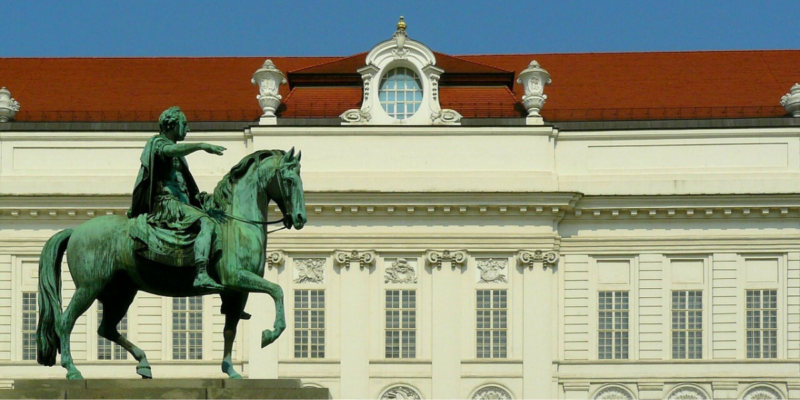
The year is young and there is still plenty of time to set goals and make resolutions. So what are you waiting for? The world is large, and life is short and, if I may borrow from D. H. Lawrence: “Life is ours to be spent, not to be saved.”
Cheers and safe travels,


Camino de Santiago, Spain
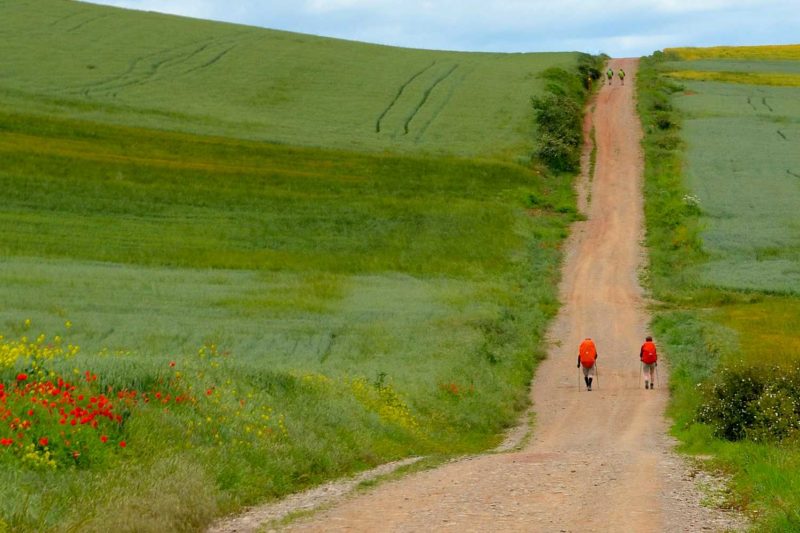
Pilgrims on their way to Santiago de Compostela in northern Spain.
The Camino de Santiago (also known as the Way of St. James) is a thousand-year-old network of pilgrim routes that converge in Galicia in the scenic northwest corner of Spain—a long-distance walk that is enjoying renewed popularity in recent decades as a personal and spiritual journey of discovery and perseverance, if not one motivated by religious beliefs. This unexpected rebirth is due in part to a small budget film called The Way (2010) by the father-son team of Martin Sheen and Emilio Estevez, and the Camino’s designation as a UNESCO World Heritage Site in 2015.

Patricia walking the Camino.
The Christian faithful first made this pilgrimage in the 9th century when the remains of St. James the Apostle (or Santiago in Spanish) were unearthed not far from where the magnificent Catedral de Santiago de Compostela (and the saint’s tomb) now stands. Begun in 1078 and later greatly expanded, the cathedral remains the end point for those walking several days or even months (the latter for those who originate in France and oft times far beyond). “The door is open to all,” says a line in a poem about the Camino written in the 13th century, and today, close to 350,000 pilgrims complete some section of the Camino each year for reasons that are as varied as they are heartwarming.
Walk the Camino in 2020 to avoid the expected surge in numbers when the Holy (or Jubilee) Year takes place in 2021. On July 25, 2021, the feast day of St. James will fall on a Sunday (the last time this happened was in 2010). Lodgings along the Camino range from the rudimentary, hostel-like refugios that have welcomed pilgrims for centuries, to some extremely comfortable properties and excellent restaurants for those who prefer more creature comforts. I traveled with US-based Duperier’s Authentic Journeys, who facilitated every imaginable logistic, from booking small and often historic hotels and atmospheric local restaurants to transporting luggage, all overseen by the simpatico bilingual guide Juan Carlos. “JC” accompanied our small group, leaving us to enjoy, unencumbered and carefree, what we all unanimously agreed was a deeply rewarding and once-in-a-lifetime experience.
For organized luxury walking tours of the Camino de Santiago with Authentic Journeys, click here.
Japan
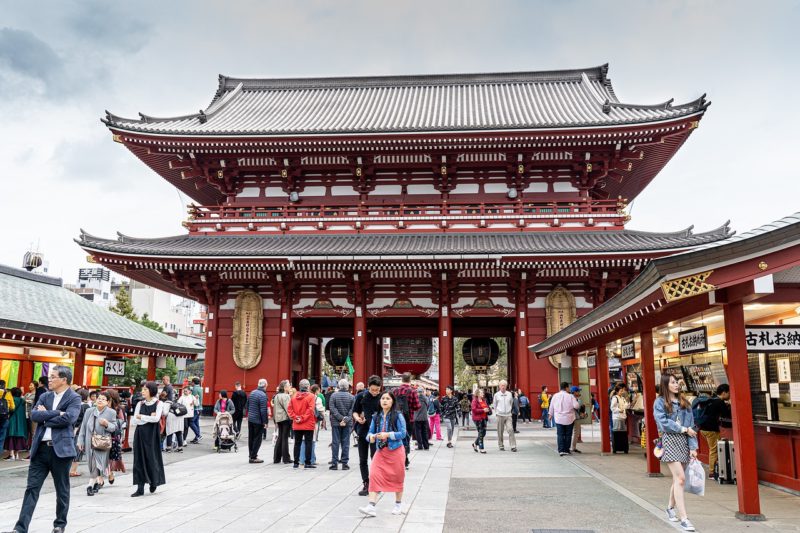
Senso-ji is Tokyo’s oldest and most visited shrine.
Japan was the first Asian country to host the prestigious Summer Olympic Games in Tokyo in 1964. And Tokyo will be the first Asian city to host a second Summer Olympics on July 24‒August 9, 2020. But unless you relish the inescapable heat, large (albeit polite) crowds, and high prices, it will behoove most visitors to consider a trip during the months before or after Tokyo 2020, when tourists will benefit from the deep-pocket investments made to improve infrastructure and transportation, upgraded and newly built accommodations, and increased availability in everything from international air travel to domestic Uber transportation.
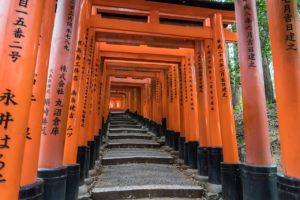
Kyoto’s Fushimi Inari Shrine is known for its thousands of ‘torii’ gates.
Japan and its multitude of attractions will be the focus of ambitious pre‒Olympic Games media attention that will enlighten western viewers about Tokyo, one of the world’s largest capital cities, a fascinating fusion of the exceedingly modern and the staunchly traditional—as seen in its people, architecture, food, history, and yes, shopping! Yet Tokyo—whose dense metro area of diverse neighborhoods and a population of 37 million make it the largest city in the world—is also a city that is inherently safe, respectful, organized, and genuinely welcoming.
Rather than any one specific attraction—though the newly relocated Toyosu Fish Market or the Shinto religion’s great Meiji Shrine deserve a visit—it is the city itself that fascinates, its narrow alleyways and pulsating neon-lit boulevards offering the chance to experience the entire breadth of Japanese history and culture in one go.
You can easily escape Tokyo by jumping on the Shinkansen bullet train, which can get you to Kyoto in just over two high-speed hours. At times you’ll sense a quasi small-town atmosphere as you wander through the atmospheric neighborhoods and enjoy a profusion of Shinto shrines and Buddhist temples (and the enchanting manicured gardens that surround them) for which this ancient capital of Japan is known.
For travel to Japan with ATJ, click here.
Austria
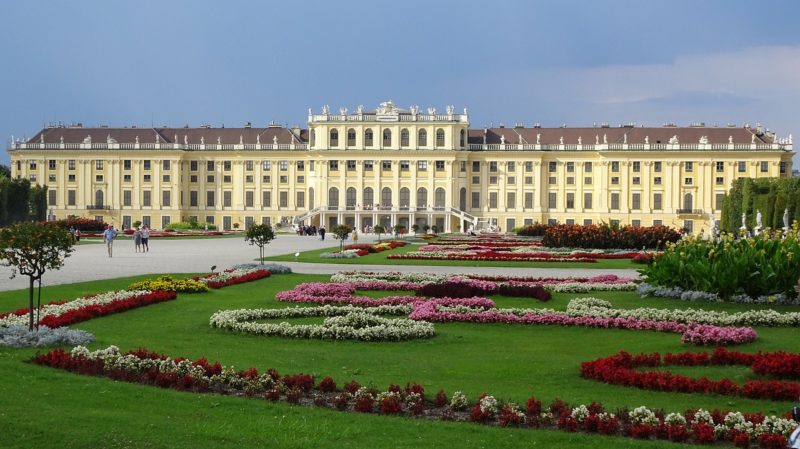
Vienna’s Schonbrunn Palace was the summer residence of the Hapsburg rulers.

Beethoven, born in Germany, is buried in Vienna.
A perennial favorite European destination—and one of only four capital cities on the banks of the Danube (making a river cruise an increasingly popular way to visit)—elegant Vienna has steadily been shedding much of its imperial stodginess with a burgeoning museum and gallery scene and an all-around younger and more contemporary vibe. But its rich musical heritage holds steadfast, shaped by luminary residents such as Wolfgang Amadeus Mozart, Johann Strauss (father and son), and the much beloved Ludwig van Beethoven, who will be the center of attention in 2020 during a yearlong look at his musical genius when Vienna celebrates the 250th anniversary of his birth.
Although born in Germany, Beethoven arrived in Vienna in his early twenties and was soon considered “as Viennese as apple strudel.” Historical and imposing musical venues around town will be hosting an impressive roster of Beethoven-themed events that kicked off on New Year’s Day 2020. The closing event will take place on the composer’s birthday, December 16—which coincides seamlessly with Vienna’s annual Christmas Market, that begins mid-November. The market located in front of the neo-Gothic Rathaus (Town Hall) is one of Europe’s oldest, largest, and finest, but it is not Vienna’s only one—you can spend a week visiting a different market each night.
Trains running between Vienna and Salzburg are easy and frequent, and you can be strolling the beautifully preserved, store-lined streets of Salzburg’s historic center (Altstadt) in less than 3 hours. The hometown of Mozart is world renowned for the Salzburg Festival—self-billed as the “world’s most important celebration of opera, music, and theater”—especially this year when it celebrates its 100th anniversary. A themed selection from the festival’s rich concert program will highlight Beethoven’s work. It is believed that Beethoven was just seventeen when he traveled from Germany to meet the older and already established Mozart who was working prolifically in Vienna. Although Mozart died not that long afterward at age thirty-five, his work continued to be a source of inspiration for Beethoven.
For guided tours of Austria with Trafalgar, click here.
For Vienna’s Beethoven Festival schedule, click here.
Monument Valley Navajo Tribal Park, Arizona/Utah
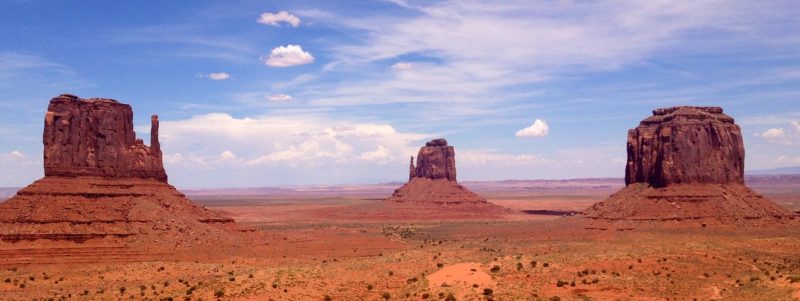
Just one road runs through the highly scenic Monument Valley.
We’ve all seen this timeless American landscape before—the fantastic, towering sandstone buttes, spires, and arches that have been sculpted by the elements over time—spread across this vast desert corner of northern Arizona and southern Utah. This is Monument Valley, the recognizable backdrop for Wild West movies made by John Ford, who first discovered this region when filming Stagecoach here in 1939 with a rookie actor named John Wayne. Ford made seven more films here over the next twenty-five years, and for decades, Monument Valley would define what moviegoers thought of when imagining the American West.
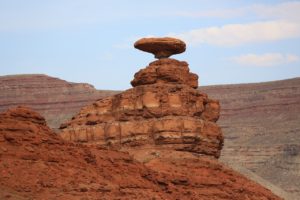
The valley has been used as the backdrop for countless films made about Wild West.
This breathtaking 91,000-acre stretch of flat-bottomed land is a Navajo Nation Tribal Park—just a sliver of the far greater 17 million-acre Navajo territory where tribal members still live, raise livestock, and farm. Anyone wanting to venture off the 17-mile-scenic-loop road must do so in the company of a Navajo guide—promising a fun-filled tour for all ages that is more interesting and insightful than a year back at school. Monument Valley is often mistakenly considered a US National Park—after all, there are a good many clustered in this particularly well-endowed area of the US Southwest. Monument Valley is part of the Grand Circle self-drive itinerary, which includes the Grand Canyon, Zion, Lake Powell, Antelope Canyon, Mesa Verde, Durango & Silverton Railroad, Bryce Canyon, Capitol Reef National Park, Canyonlands, Highway 12, and Arches National Park. As epic American road trips go, this one is hard to beat.
For more information about Monument Valley Tribal Tours, click here.
Egypt
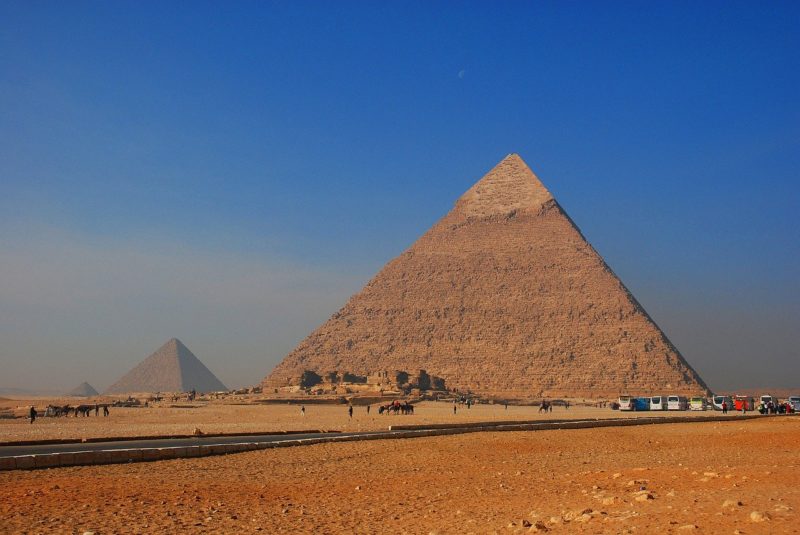
The Great Pyramids of Giza have stood outside of Cairo for 4,000 years.
Visitors have been returning to Egypt in growing numbers, most beginning their stay in the gritty and chaotic megacity of Cairo, welcomed by tourism officials and the warm legendary hospitality of the Egyptian people. But this year is special: The government is focusing its spotlight on the much-awaited completion of Cairo’s aptly named GEM (Grand Egyptian Museum), symbolic of a renewed and deserved interest in the country’s unparalleled legacy. Decades in the making and wildly over budget, it is scheduled to open late 2020.

Hieroglyphics were the formal writing system used in ancient Egypt.
“Pharaonic” best captures the vast and astounding 5.2-million-square-foot structure billed as the world’s largest archeological museum. Located just west of Cairo and in the shadow of the Giza Pyramids, the Grand Egyptian Museum was first announced in 1992 and will have cost $1.1 billion upon completion. Until then, special (and not inexpensive) behind-the-scenes tours have begun, allowing limited access to the state-of-the-art conservation laboratories where some 100,000 items collected along the banks of the Nile are skillfully being prepared for display. Among them are shimmering, never-before-seen artifacts removed from the tomb of the boy king, Tutankhamun, amazing for being well over 3,000 years old.
Many of those treasures are being transferred from Cairo’s current Egyptian Museum, built in 1901 on the edge of Tahrir Square. Loved by many for its dated, poorly labeled, and overcrowded halls, the Egyptian Museum will continue to function as an active museum until the transition is official—and is then slated for a long-overdue and much-needed revamp of its own.
Cairo feels like one big, vibrant open-air museum, which can be both exhilarating and exhausting, so the return of both new and newly refurbished luxury Nile cruise boats is a soothing chance to recharge. The cruises originate in Luxor and drift past the magnificent sites of Upper Egypt in great style and comfort, offering views of astonishing antiquities and temples.
For organized tours and private, pre-opening tours of the GEM with Abercrombie & Kent, click here.
For luxury Nile Cruises with Uniworld: Boutique River Cruise Collection, click here.
Romania & Bulgaria
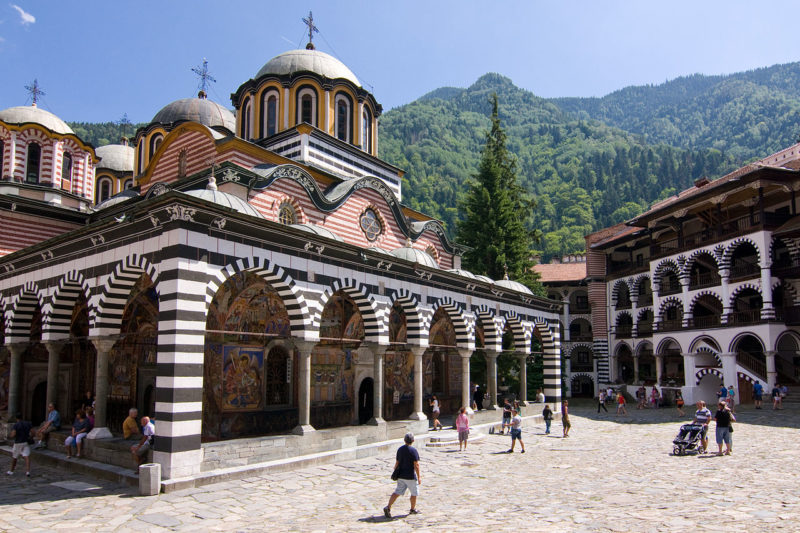
The Rila Monastery is Bulgaria’s largest Eastern Orthodox monastery.
Here is a chance to travel with me and a small group in August 2020 as we explore the complex history and fascinating culture of these two neighboring countries on the fringe of Europe, whose rugged terrain and consequent isolation have helped preserve their heritage. We’ll see painted monasteries covered in luminous frescoes, breathe in the fragrance of the Valley of the Roses, and visit stuck-in-time Transylvanian villages. We’ll hear about the origins of Count Dracula in the medieval towns of Sighisoara and Bran, whose Gothic castle looks just like the Transylvanian vampire castle you’ve always imagined.
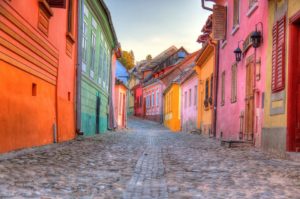
The colorful Transylvanian city of Sighisoara is a favorite stop in Romania.
Romania has been called by some the “new Italy” because of its welcoming and relaxed people, its varied and fresh farm-to-table food and wine, its rural agricultural countryside framed by the Carpathian Mountains, and the occasional Roman ruins. Of its cultured cities, the standout is Bucharest—once called the “Little Paris of the East”—with a Palace of Parliament that is the world’s second largest administrative building after the Pentagon. Romania’s capital takes many by surprise: Still rebounding from decades of repression, Bucharest can feel rough around the edges but is brimming with a youthful vibe (attracted by its inexpensive reputation), rich culture, Orthodox churches, beautiful parks, and a growing arts and crafts and restaurant scene.
Historically important travel routes crossed Romania and Bulgaria from north to south and from east to west. The influences of the different groups who traversed this land can still be seen in the architecture, people, culture, and customs. The mingling of the East and West is ubiquitous—from its food to its religious heritage. Bulgaria’s culture still flourishes intact today. We’ll drive past villages that cling to forested hillsides, wandering herds of livestock, historic monasteries, isolated small farms, and small wineries that haven’t changed much over the centuries.
For more information about tours with MIR Travel Corporation, click here.
Italy
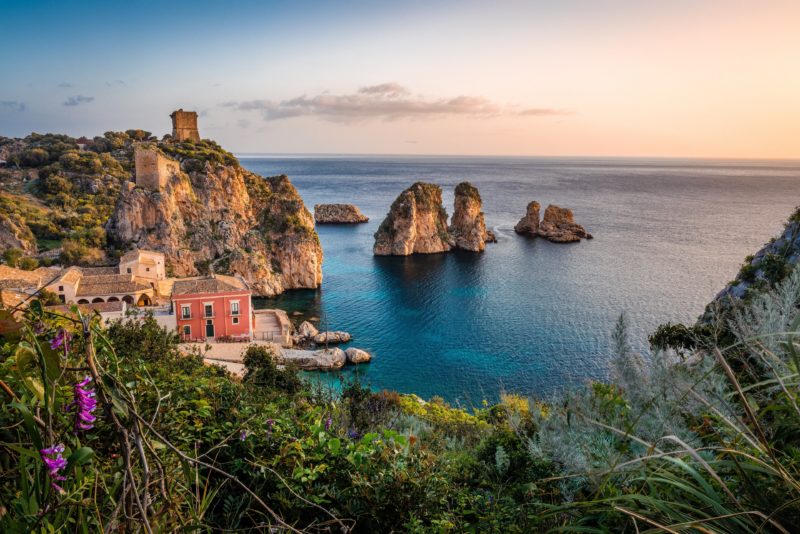
Just off the “toe” of Italy’s “boot,” Sicily is the largest island in the Mediterranean.
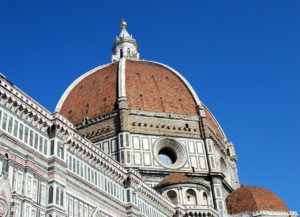
One of Florence’s most iconic sights is the Duomo (Cathedral), a gem of the Renaissance.
Come and experience Bella Italia with me in July 2020! It is not surprising that I am often asked: Of all the places I have ever visited, which is my favorite place on earth? Robert Browning shares my sentiments in his quote: “Open my heart and you will see / Graved inside of it, ‘Italy.’” The three years I lived in Florence were among the most important and transformative chapters of my life, and I am excited and honored to host a specially-designed trip that explores the breadth of Italy—from the north (Venice) to the south (Palermo)—with Trafalgar Travel, hitting many of the country’s fantastic highlights, with a lot of surprises in between!
For someone who only rarely returns to the same destination twice, it speaks volumes that I have joyously returned to Italy time and again. I’ve lost track of how times I have visited Italy—it is a love affair that continues today. Of course, it helps that my mother’s family hails from southern Italy, but one needn’t be of Italian heritage to appreciate everything that Italy promises, in a variety and frequency that I have never found elsewhere. For example, Italy is home to more UNESCO World Heritage Sites (55) than any other country worldwide. And can we talk about the cucina italiana? You’ll have to excuse the Italians if they seem a little food obsessed.
Our avventura italiana begins and ends in two of Italy’s (and Europe’s) most unique cities—Venice, the Queen of the Adriatic; and Palermo, on the island of Sicily, which can often feel light-years away from the mainland and is about as un-Italian a city as you can find. We’ll visit the country’s Grand Tour cities (Florence and Rome), as well as smaller gems (Verona and Taormina), sail to the island of Capri, and stroll the ancient streets of Pompeii. Our grand finale will be a send-off dinner at the palatial, fresco-covered home of the Duchess of Palma, which is like something out of a movie set—but better.
For those traveling from the US, click here.
For those traveling from Canada, click here.
About the Book:
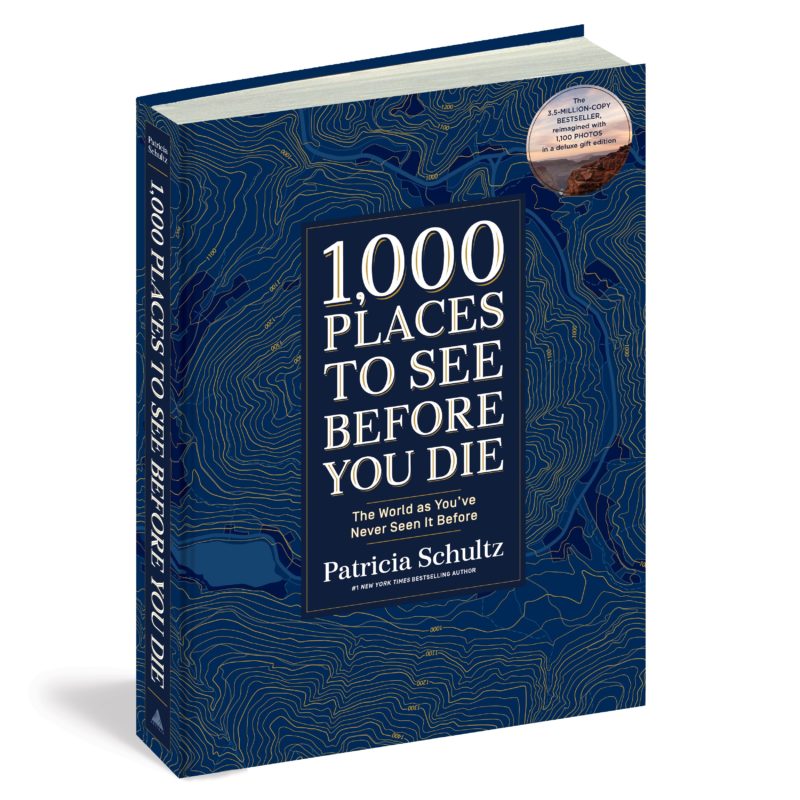 “Gorgeous . . . breathtaking . . . This spectacular coffee-table book will inspire readers to add more destinations to their bucket lists.” —Publishers Weekly
“Gorgeous . . . breathtaking . . . This spectacular coffee-table book will inspire readers to add more destinations to their bucket lists.” —Publishers Weekly
Patricia Schultz curates the world. When she published the original 1,000 Places to See Before You Die, she created not only a new kind of travel book but also a new way of thinking about our experiences and interests.
Now Schultz captivates our hearts in the same compelling way her original book spoke to our minds. Moving from eloquent word to breathtaking image, she takes us on a visual journey of the best the world has to offer, and as we turn the pages and pore over these images, we feel it all: joy, curiosity, awe, passion, nostalgia (if we’ve been there), inspiration (because we want to go), and a profound and transforming sense of how lucky we are to live in a world filled with such beauty and wonder—to see tributaries of mist curling over the Great Wall, elephants grazing on the floor of the Ngorongoro Crater, the sun setting on the wild coast of Donegal, masked whirling dancers at a festival in Bhutan.
The book itself is a thing of beauty, an oversize feast of more than 1,000 all-new photographs and 544 pages, every spread and page designed to showcase these mesmerizing photographs and hold just enough of Schultz’s lively text that we know why it is we’re looking at them. It is a perfect gift for every traveler, every fan of the original, every dreamer whose Instagram feed is filled with pictures of places near and far.
Buy the Book
Amazon | B&N | Indiebound | Workman

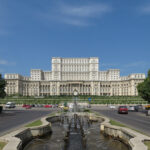
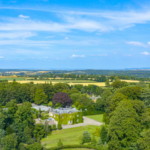


No Comments